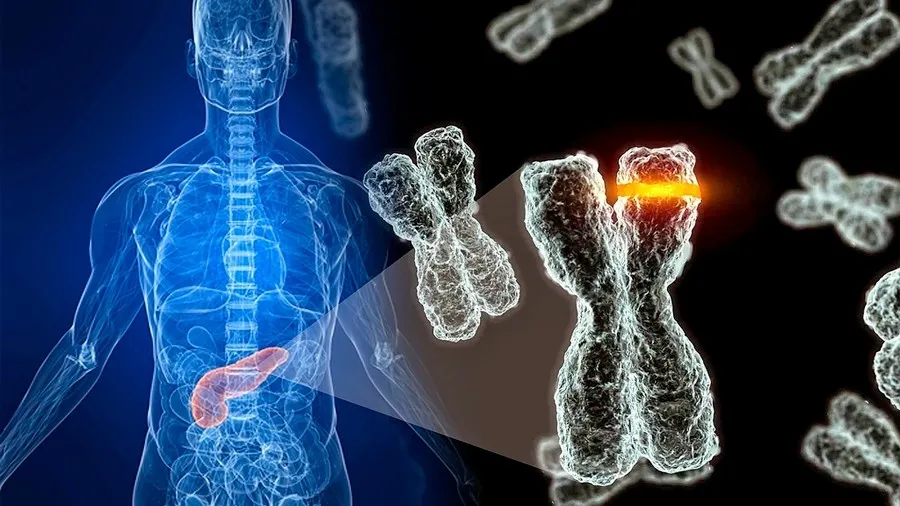
Scientists discover a gene causing diabetes that can be regulated
A study has discovered a switch that regulates the activity of a gene that causes diabetes.This has discovered the Genomic Regulation Center of Barcelona and the Imperial College of London (United Kingdom)
The findings, published in the scientific journal 'Nature Cell Biology', reveal possible new vulnerabilities in the disease and could lead to the development of new therapeutic strategies.
HNF1A is a gene that provides instructions to produce a protein called a nuclear factor 1 hepatocyte alpha.The protein is expressed in many tissues, and is particularly important for the pancreas, where it plays a role in the development of beta cells.Beta cells produce insulin hormone, which regulates blood sugar levels.
HNF1A mutations cause cells to build a protein that does not work as it should and harms the function of beta cells.
This makes people develop a disease known as diabetes of the youth adult, where symptoms such as the high level of blood sugar may appear before people reach the age of 30.
Although this disease represents only 1 percent of all types of diabetes, its prevalence is high in terms of absolute numbers because between 5 and 10 percent of the world's population has diabetes.HNF1A also plays a key role in susceptibility to the most common form of the disease, type 2 diabetes, along with other genetic and non -genetic factors.
Understand how the HNF1A gene is activated in beta cells could have important implications to understand why defects in this gene lead to diabetes, or how it could be used to correct the underlying problem.
Using a combination of mouse and humans, the study focuses on a enigmatic part of the genome near the HNF1A location.
They discovered that this region, also known as a regulatory element of DNA, has a unique function that has not been described before: it works as a rheostat.If the HNF1A gene transcribes too much, Haster controls it and reduces its activity, if the gene is loosening, haster adjusts the intensity and increases its expression.
"We have called it a stabilizer, in contrast to other DNA regulatory elements as potentiating, promoters and silencers, and we call this particular element, for being a HNF1A stabilizer," explained Dr. Jorge Ferrer, chief main researcher of the CRG andCIBERDEM Group Head, the Biomedical Research Center for Diabetes and Associated Metabolic Diseases.
The vast majority of the synthesized RNA molecules inside the cells do not encode proteins.Haster controls the production of a class of these RNA molecules called long non -coding RNA molecules, also known as lincrnas in English.
"This is interesting because there are tens of thousands of lncrnas in the human genome, most of whom do not have a known function. It is very likely that there are many lncrnas in our genome with a function similar to Haster. If so, they could performAn important role in human disease, "says Dr. Anthony Beucher, first author of the study.
The study shows that mutations in Haster cause diabetes in mice."This is important, because it shows that this type of element is critical. The consequences of eliminating haster are comparable to eliminating HNF1A itself. Haster could be a useful way of manipulating HNF1A therapeutically," said Dr. Ferrer.
The study is an example of how the study of genomic sequences that do not encode proteins can reveal new ways of understanding and treating diseases.
Only 1-2 percent of the genomehuman consists of coding protein sequences.It is believed that the remaining "dark matter" includes tens of thousands of regions that regulate gene expression.
By demonstrating that changes in the function of gene elements such as haster can drastically change the cell function similar to the interruption of the gene itself, researchers pave the way for future studies that explore the role of non -coding sequences and asThey promote the disease.
"The human genome dedicates much more space to regulate genes than to the genes themselves. In this study we have experimentally validated only one region to determine its function. This is likely to be just the tip of the iceberg," Ferrer concluded.

11/02/2022 10:23 a.m.
@fer - Diabetes Tipo 1 desde 1.998 | FreeStyle Libre 3 | Ypsomed mylife YpsoPump + CamAPS FX | Sin complicaciones. Miembro del equipo de moderación del foro.
Co-Autor de Vivir con Diabetes: El poder de la comunidad online, parte de los ingresos se destinan a financiar el foro de diabetes y mantener la comunidad online activa.
